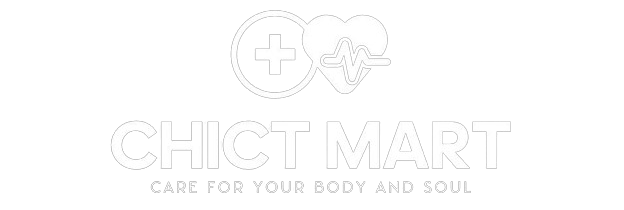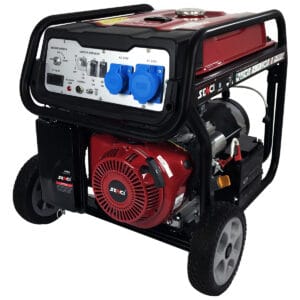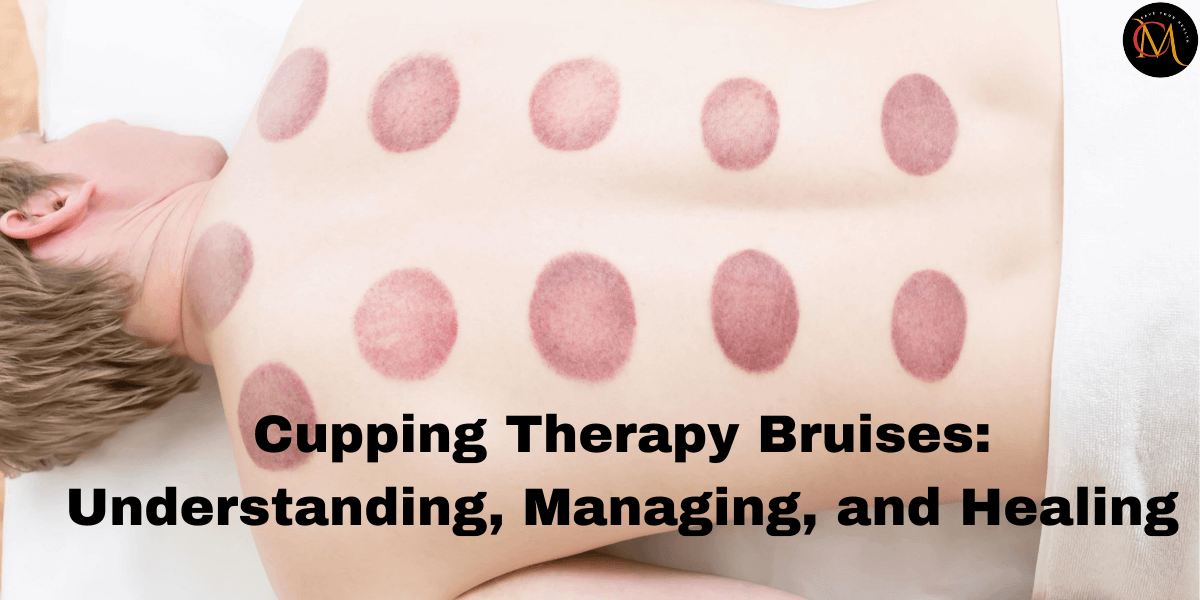
Have you ever seen those circular marks on athletes’ backs and wondered what they were? You are not alone! Those mysterious marks are actually cupping bruises, and they’ve been causing quite a stir in the world of alternative medicine and sports therapy. But what exactly are these marks, and why do they appear? More importantly, how can you make them go away if you decide to try cupping therapy for yourself?
In this comprehensive guide, we’ll dive deep into the world of cupping bruises. We’ll explore what they mean, why they happen, and how to manage them effectively. Whether you’re a cupping newbie or a seasoned pro, this article will give you all the information you need to understand and care for your cupping marks.
What Cupping Bruises mean?
Cupping bruises, also known as cupping marks or cupping hickeys, are circular discolorations that appear on your skin after a cupping therapy session. These marks can range in color from light pink to deep purple, and they’re a normal part of the cupping process.
The Science Behind Cupping Marks
What’s really going on under your skin when these marks appear? Well, it’s all about blood flow and suction. When the cups are placed on your skin and the air is removed, it creates a vacuum effect. This suction pulls your skin and superficial muscle layer into the cup, which can cause small blood vessels to break.
The result? Blood and fluids are drawn to the surface of your skin, creating that characteristic bruise-like appearance. It is kind of like giving your body a giant hickey but for therapeutic purposes, of course!
Different Types of Cupping Marks
Not all cupping marks are created equal. Depending on the technique used and your body’s response, you might see different types of marks:
Light pink marks:
These are usually the result of lighter suction and indicate mild stagnation in the area.
Red marks:
A bit more intense, these suggest moderate stagnation and increased blood flow to the area.
Dark purple or black marks:
These are the most intense and typically indicate significant stagnation or toxin buildup.
Remember, the intensity of the mark doesn’t necessarily correlate with the effectiveness of the treatment. Everyone’s body responds differently to cupping!
Are cupping marks like bruises?
Cupping marks are often compared to bruises because they share some visual similarities, but there are important differences between the two.
| Cupping Marks: | Bruises: |
|
|
|
|
|
|
|
|
Why Cupping Leaves Bruises?
Now that we know what cupping bruises are, talk about why they happen in the first place. It all comes down to the cupping process itself and how your body responds to it.
The Cupping Process Explained
Cupping therapy involves placing special cups on your skin to create suction. You can do it in few different ways:
- Fire cupping: The traditional method where heat is used to create a vacuum in the cup.
- Pump cupping: A more modern approach using a hand pump to remove air from the cup.
- Wet cupping: Similar to dry cupping, but involves making small incisions in the skin before applying the cups.
Regardless of the method used, the goal is the same: to create suction that pulls your skin and superficial muscles into the cup.
Factors Influencing Bruise Formation
Several factors can influence how your body responds to cupping and the intensity of the bruises that form:
- Suction strength: Stronger suction is more likely to cause more intense bruising.
- Duration of treatment: The longer the cups are left on, the more likely you are to develop bruises.
- Your skin type: Some people are simply more prone to bruising than others.
- Health conditions: Certain health issues can make you more susceptible to bruising.
- Medication: Some medications, like blood thinners, can increase your likelihood of bruising.
The Meaning Behind Cupping Bruises
Now that we understand why cupping leaves bruises, let’s explore what these marks might mean. It’s important to note that interpretations can vary depending on whether you’re looking at it from a traditional or modern perspective.
Traditional Interpretations
Traditional Chinese medicine, the color and pattern of cupping marks are thought to provide information about your health. Light marks might indicate a yang deficiency or that the area is relatively healthy. Red marks could suggest heat or inflammation in the body. Purple or black marks might indicate blood stagnation or toxin buildup.
Traditional practitioners might use this information to guide further treatment or make lifestyle recommendations.
Modern Medical Perspectives
From a modern medical standpoint, the meaning of cupping bruises is a bit different. While the marks themselves aren’t seen as diagnostic tools, the therapy is believed to increase blood flow to the area, reduce muscle tension, and promote cellular repair and regeneration.
The bruises are simply a side effect of this process, not necessarily an indication of health issues or treatment effectiveness.
When Do Cupping Bruises Show up?
If you are new to cupping, you might be wondering when you can expect to see those telltale marks. The answer is: pretty much immediately! Cupping bruises typically start to form during the treatment itself and become more noticeable within a few hours after the session.
As the cups are removed, you will likely notice circular marks where they were placed. These marks might be light at first, but they often darken over the next few hours as blood continues to pool in the area.
It is worth noting that not everyone will develop visible bruises after cupping. Some people might only experience slight redness that fades quickly, while others might develop darker, longer-lasting marks. Your response can depend on factors like your skin type, the intensity of the treatment, and your overall health.
How Long will Cupping Bruises Last?
One of the most common questions about cupping bruises is how long they stick around. After all, you might not want to sport those circular marks forever! Let’s break this down.
Typical Duration of Cupping Marks
On average, cupping bruises last anywhere from a few days to two weeks. Here’s a general timeline:
Days 1-3:
The marks are usually at their most intense, appearing dark red, purple, or even black.
Days 4-7:
The bruises start to fade, often turning a lighter shade of red or brown.
Days 8-14:
For most people, the marks have significantly faded or disappeared by this point.
This is just a general guide. Your bruises might heal faster or slower depending on various factors.
Cupping Affecting Healing Time Factors
Your bruises might heal faster or slower depending on various factors. Your overall health plays a role if you are in good health, your body might heal the bruises more quickly. Circulation is also important, as better blood circulation can help speed up the healing process.
Staying well-hydrated can help your body flush out the broken-down blood cells more efficiently. Your skin type can affect healing time too, as some skin types are more prone to bruising and may take longer to heal. Finally, the treatment intensity matters stronger suction or longer treatment times might result in bruises that take longer to fade.
Are Cupping Marks Different from Regular Bruises?
You might be wondering if cupping marks are the same as the bruises you get from bumping into furniture or playing sports. This looks like similar, but there are some differences.
Cupping marks are intentional they are a planned result of a therapeutic treatment, not an accidental injury. They’re also typically more superficial. Cupping affects the skin and superficial muscle layers, while regular bruises can impact deeper tissues.
Unlike regular bruises, cupping marks are usually painless. They don’t typically hurt when touched. The distinct round shape of cupping marks also sets them apart from irregular bruises caused by impacts.
Despite these differences, the underlying process is similar. Both types of bruises involve broken blood vessels and pooled blood under the skin.
Why Do My Cupping Bruises Hurt?
While cupping bruises are typically painless, some people might experience discomfort. It is normal to feel some sensations during and after cupping. You might experience a pulling or stretching feeling during treatment, warmth in the treated area, or mild tenderness immediately after removing the cups.
Cupping should not be painful. If you experience sharp pain during treatment or lasting pain in the bruised areas, it could indicate a problem. You should contact a healthcare professional if you experience severe pain during or after treatment, bruises that are extremely painful to touch, signs of infection like fever, swelling, or oozing from the treated area, or bruises that don’t start to fade after a week.
Remember, while some discomfort can be normal, severe pain is not a part of proper cupping therapy.
Cupping Bruises on Different Body Parts
Cupping can be performed on various parts of the body, and the bruising can look and feel different depending on where it’s done. Let’s take a tour of some common cupping locations and what you can expect.
Cupping Bruises on Back

The back is probably the most common area for cupping, especially among athletes. Back cupping bruises are often the most noticeable because:
- The skin on your back is relatively thick, which can lead to more intense marks.
- There’s a large surface area, allowing for multiple cups to be used.
- The back is often exposed in athletic or beach settings, making the marks more visible.
Back cupping bruises typically follow the pattern of the spine and shoulder blades, creating an almost symmetrical design. While they might look intense, these bruises are usually painless and fade within a week or two.
Cupping Bruises on Face
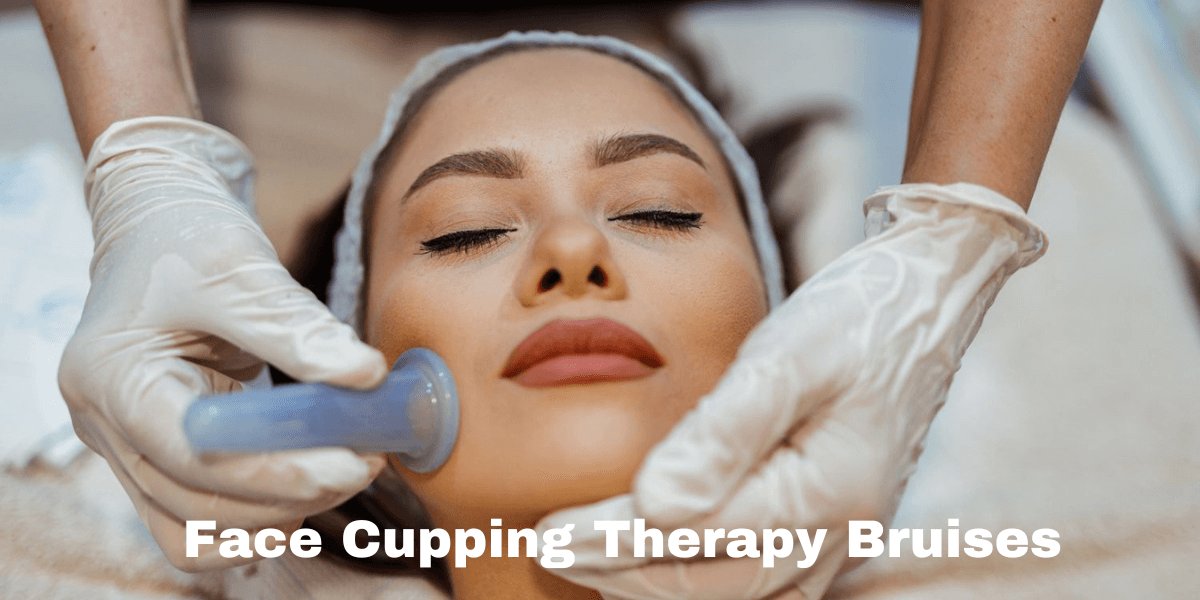
Facial cupping has gained popularity in recent years as a natural way to promote skin health and reduce signs of aging. But don’t worry – facial cupping marks are usually much less intense than those on the body. Here’s what you need to know:
- Facial cupping uses smaller cups and gentler suction.
- Marks are often barely noticeable, appearing as a light flush rather than dark bruises.
- Any visible marks typically fade within a day or two.
The goal of facial cupping is to stimulate blood flow and lymphatic drainage, not to create lasting marks. If you’re getting dark bruises from facial cupping, the treatment might be too intense for your skin.
Cupping Bruises on Neck
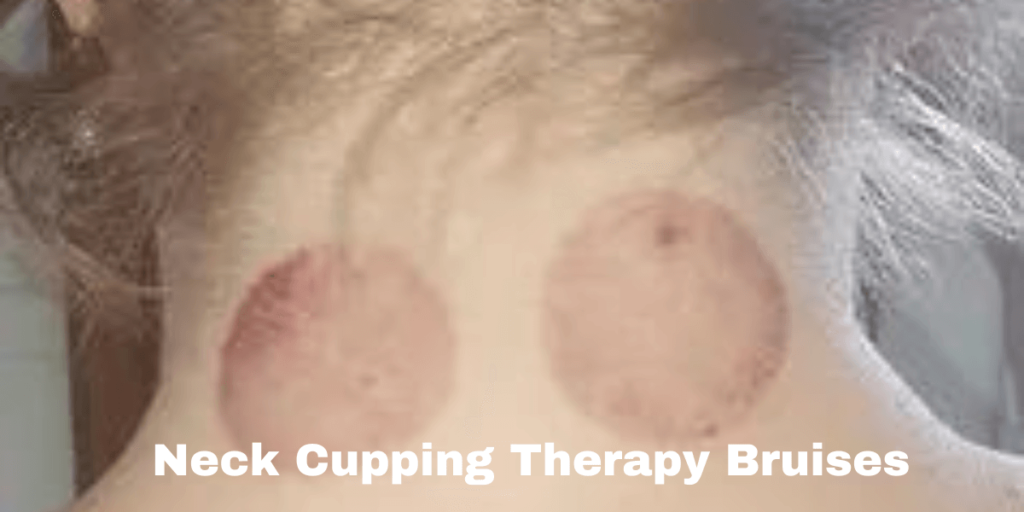
Neck cupping can be helpful for tension headaches and neck pain, but it requires careful application. Neck cupping bruises:
- Are usually lighter than back bruises due to the delicate skin in this area.
- Might be more noticeable due to the neck’s visibility.
- Typically fade faster than bruises on larger body parts.
It’s crucial that neck cupping is performed by a trained professional to avoid any risk to the sensitive structures in this area.
Cupping Bruises on Leg
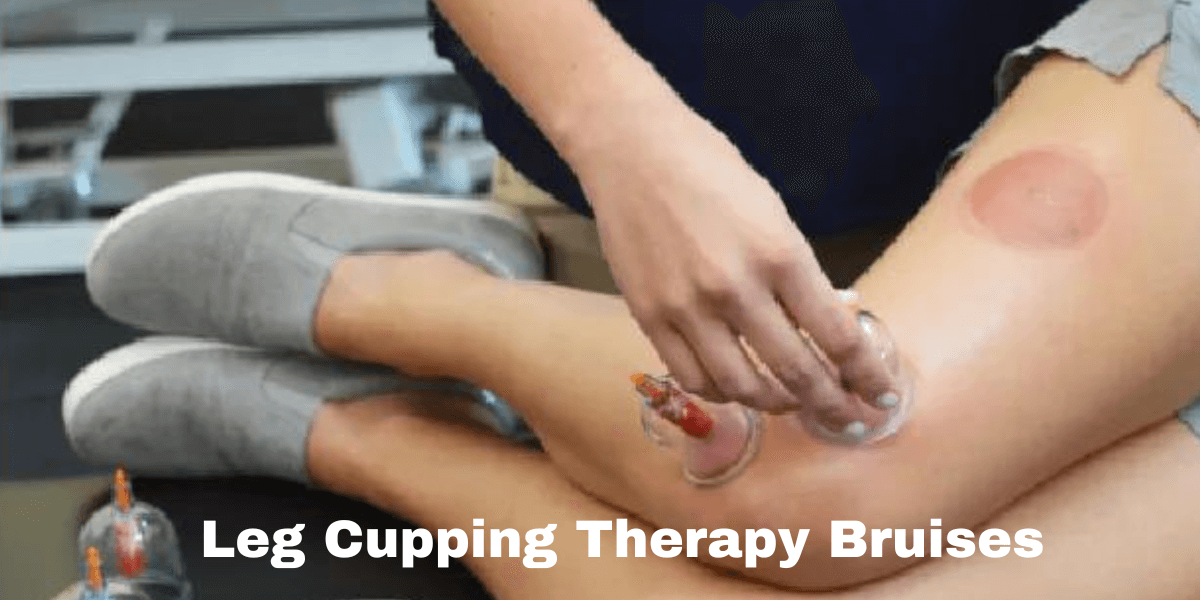
Leg cupping is often used to address issues like muscle soreness, poor circulation, and cellulite. Leg cupping bruises:
- Can vary in intensity depending on the part of the leg treated.
- Might be darker on areas with more fatty tissue, like the thighs.
- Often fade faster on the lower legs due to better circulation in this area.
Remember, whether you’re cupping your back, face, neck, or legs, the bruises are a normal part of the process. However, if you’re concerned about their appearance or duration, don’t hesitate to consult with your practitioner.
Removing Cupping Marks on the Face
Facial cupping is a bit different from body cupping, and so is the aftercare. Here’s how to deal with facial cupping marks:
Gentle Techniques for Facial Skin
- Light massage: Gently massaging the treated area can help disperse any minor bruising.
- Jade roller or gua sha: These tools can help promote lymphatic drainage and reduce puffiness.
- Cool tea bags: Placing cool green tea bags on the area can help soothe the skin and reduce any redness.
Products to Avoid
While your skin is healing from facial cupping, it is best to avoid:
- Harsh exfoliants or scrubs
- Alcohol-based toners
- Heavy makeup
Stick to gentle, nourishing skincare products to support your skin’s healing process.
How to Make Cupping Bruises Go Away Faster
While cupping bruises will eventually fade on their own, you might be looking for ways to speed up the process. Here are some strategies that can help:
Natural Remedies
Arnica: This herb is known for its bruise-healing properties. Use arnica gel or cream to the affected area.
Bromelain: Pineapples contain a protein called bromelain, which has anti-inflammatory properties. Consider consuming raw pineapple or supplementing with bromelain.
Vitamin K: This vitamin plays a crucial role in blood clotting. Eating foods rich in vitamin K, like leafy greens, can support bruise healing.
Topical Treatments
- Cold compress: Applying a cold pack immediately after treatment can help minimize bruising.
- Warm compress: After the first day, switch to warm compresses to promote blood flow and healing.
- Aloe vera: This soothing gel can help reduce inflammation and promote skin healing.
Lifestyle Adjustments
- Stay hydrated: Drinking plenty of water helps your body flush out toxins and promotes healing.
- Get moving: Light exercise can boost circulation, helping your body clear the bruises faster.
- Eat a balanced diet: Nutrients from a variety of fruits, vegetables, and lean proteins support your body’s healing processes.
Remember, while these methods can help, the most important factor is time. Be patient and gentle with your skin as it heals.
Smart Cupping Therapy: A Modern Approach
As with many traditional practices, cupping has evolved with technology. Smart cupping therapy is a modern twist on this ancient technique that aims to provide the benefits of cupping with more control and potentially less bruising.
Benefits of Smart Cupping Therapy
Smart cupping devices offer several advantages:
- Precise control over suction intensity
- Timer functions for consistent treatment durations
- Different suction patterns (pulsating, constant, etc.)
- Data tracking for treatment consistency.
Reduced Bruising with Smart Cupping
One of the main selling points of smart cupping is the potential for reduced bruising. Here’s why:
- Better control over suction strength allows for gentler treatments.
- Consistent application reduces the risk of overtreatment.
- Some smart cupping devices use techniques that may cause less trauma to blood vessels.
While smart cupping can potentially reduce bruising, it’s important to note that some level of marking is still normal and expected with any form of cupping therapy.
Preventing Excessive Cupping Bruises
While some level of bruising is normal with cupping, there are ways to minimize excessive marks. Communication with your practitioner is key – let them know if you bruise easily or if you’re concerned about marks. If you’re new to cupping, consider asking for a lighter treatment to see how your body responds. Limiting treatment time can also help, as shorter sessions can still be effective while reducing the likelihood of intense bruising.
Staying hydrated is crucial. Drink plenty of water before and after your treatment to support your body’s healing processes. It’s also wise to avoid alcohol and blood-thinning medications, as these can increase your chances of bruising. Always consult your doctor before changing any medication regimen.
If you’re doing self-cupping, make sure you’re following correct procedures. When in doubt, seek professional treatment. Remember, the goal of cupping isn’t to create the darkest marks possible. Effective treatment can still occur with minimal bruising.
When to Avoid Cupping
While cupping can be beneficial for many people, it is not suitable for everyone. Here are some situations where you should avoid cupping or consult with a healthcare professional before proceeding:
Pregnancy: Especially in the abdominal area or acupuncture points that could stimulate labor.
Skin conditions: If you have inflamed skin, an open wound, or a skin infection in the treatment area.
Blood disorders: Conditions that affect blood clotting or increase bleeding risk.
Cancer: Especially if you are undergoing chemotherapy or radiation therapy do not use it it will be risky.
Cardiovascular issues: Including deep vein thrombosis or a history of strokes.
Severe chronic disease: Consult your doctor if you have a serious ongoing health condition.
Sunburn: Cupping on sunburned skin can be painful and potentially damaging.
Bone fractures: Avoid cupping near any broken bones or recent injuries.
Always be honest with your practitioner about your health history and any concerns you might have. They can help determine if cupping is right for you or suggest alternative therapies.
Conclusion
With its characteristic circular bruises, Cupping therapy has been used for centuries to promote healing and well-being. While these marks might look alarming at first, they’re typically harmless and fade within a few days to two weeks.
Understanding why cupping leaves bruises, what these marks mean, and how to care for them can help you get the most out of your cupping experience. Remember, everyone’s body responds differently to cupping, so what’s normal for one person might not be for another.
Whether you’re dealing with back pain, facial tension, or simply curious about this ancient practice, cupping can be a valuable addition to your wellness routine. Just be sure to work with a qualified practitioner, start gently, and listen to your body.
As we’ve explored, there are many ways to help cupping bruises heal faster, from natural remedies to modern smart cupping techniques. However, the most important factors are time and patience. Your body knows how to heal itself – cupping simply gives it a little boost.
So the next time you see someone sporting those circular marks, you’ll know they’re not battle scars, but rather signs of a therapeutic journey towards better health and wellness.
FAQs Cupping Bruises
Are cupping bruises dangerous?
No, cupping bruises are typically not dangerous. They’re a normal part of the treatment process and usually fade within a few days to two weeks. However, you should consult a healthcare professional if you experience severe pain or signs of infection.
Can I exercise after cupping?
Light exercise is generally fine after cupping and can even help promote circulation and healing. However, avoiding intense workouts in the treated area for 24-48 hours after your session is best.
Will cupping help me lose weight?
While cupping isn’t a weight loss treatment, it may help reduce the appearance of cellulite and improve circulation, which can support overall health and wellness goals.
Can I get cupping if I am taking blood thinners?
It’s crucial to consult with your doctor before getting cupping if you’re on blood thinners. These medications can increase your risk of excessive bruising or bleeding.
Does cupping hurt?
Cupping should not be painful, though you may feel a strong sucking sensation and some pressure. If you experience pain during treatment, let your practitioner know immediately so they can adjust the intensity.
